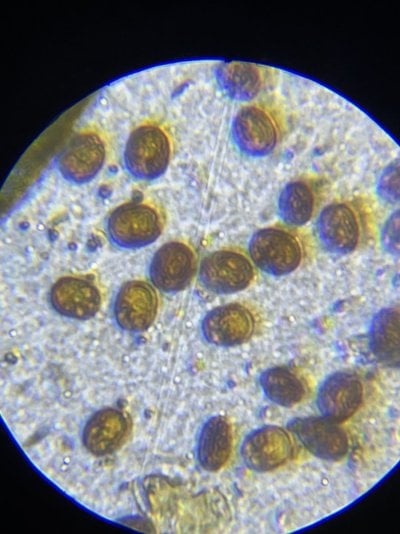Navigation
Install the app
How to install the app on iOS
Follow along with the video below to see how to install our site as a web app on your home screen.
Note: This feature may not be available in some browsers.
More options
You are using an out of date browser. It may not display this or other websites correctly.
You should upgrade or use an alternative browser.
You should upgrade or use an alternative browser.
Help identify this Dino please!
- Thread starter Mandarin the first
- Start date
- Tagged users None
ID doesn’t factor in dinos cure attempts. What factors most is the gallonage of your tank
If it’s 40 gallons or below you have control options with a high degree of cure rates that large tank reefers don’t have. If you have a large tank, expect to see the range of results below from the huge dinos work thread, with a very very low cure rate we can see thumbing through the before and after pics.

 www.reef2reef.com
www.reef2reef.com
=623 pages of work, no improvement over page one-ten results. It’s a stuck in place management option, reached its max.
Why would I say ID plays no role? Because even after getting ID as step one in all those jobs, the cure rate still isn’t above a few % out of 100. It’s not like we can search out an effective prorocentrum thread, vs an effective coolia thread etc. all dinos work threads that aren’t rip cleans have an extremely poor fix rate. ID plays no role in the 90% cure rates seen in any rip clean thread.
For a test, make an ID of your dinos with a microscope bought for the job, they need to see the cell morphology to classify
Once you get the positive ID, post for help in the nuisance algae forum and watch the pattern. Exactly like that thread above, you’ll be told to do things with nitrate and phosphate that will cause the counter invasion results seen in the thread above.
If it’s 40 gallons or below you have control options with a high degree of cure rates that large tank reefers don’t have. If you have a large tank, expect to see the range of results below from the huge dinos work thread, with a very very low cure rate we can see thumbing through the before and after pics.

Dinoflagellates – Are You Tired Of Battling Altogether?
Brown, stringy growths that diminish overnight. Ostreopsis ovata? 200x magnification. They also seem to be throwing off clear "husks" which is unexpected. What should I do? Have UV running; have been dosing phosphate (measures at zero usually).
 www.reef2reef.com
www.reef2reef.com
=623 pages of work, no improvement over page one-ten results. It’s a stuck in place management option, reached its max.
Why would I say ID plays no role? Because even after getting ID as step one in all those jobs, the cure rate still isn’t above a few % out of 100. It’s not like we can search out an effective prorocentrum thread, vs an effective coolia thread etc. all dinos work threads that aren’t rip cleans have an extremely poor fix rate. ID plays no role in the 90% cure rates seen in any rip clean thread.
For a test, make an ID of your dinos with a microscope bought for the job, they need to see the cell morphology to classify
Once you get the positive ID, post for help in the nuisance algae forum and watch the pattern. Exactly like that thread above, you’ll be told to do things with nitrate and phosphate that will cause the counter invasion results seen in the thread above.
I would like to do a rip clean but my tank is about 50 gallons and food grade containers to hold all rock and livestock and make new saltwater are very expensive where I live. I’m currently dosing phos, nitrate, waste away and running a GKM UV.ID doesn’t factor in dinos cure attempts. What factors most is the gallonage of your tank
If it’s 40 gallons or below you have control options with a high degree of cure rates that large tank reefers don’t have. If you have a large tank, expect to see the range of results below from the huge dinos work thread, with a very very low cure rate we can see thumbing through the before and after pics.

Dinoflagellates – Are You Tired Of Battling Altogether?
Brown, stringy growths that diminish overnight. Ostreopsis ovata? 200x magnification. They also seem to be throwing off clear "husks" which is unexpected. What should I do? Have UV running; have been dosing phosphate (measures at zero usually).www.reef2reef.com
=623 pages of work, no improvement over page one-ten results. It’s a stuck in place management option, reached its max.
Why would I say ID plays no role? Because even after getting ID as step one in all those jobs, the cure rate still isn’t above a few % out of 100. It’s not like we can search out an effective prorocentrum thread, vs an effective coolia thread etc. all dinos work threads that aren’t rip cleans have an extremely poor fix rate. ID plays no role in the 90% cure rates seen in any rip clean thread.
For a test, make an ID of your dinos with a microscope bought for the job, they need to see the cell morphology to classify
Once you get the positive ID, post for help in the nuisance algae forum and watch the pattern. Exactly like that thread above, you’ll be told to do things with nitrate and phosphate that will cause the counter invasion results seen in the thread above.
Similar threads
- Replies
- 4
- Views
- 313
















